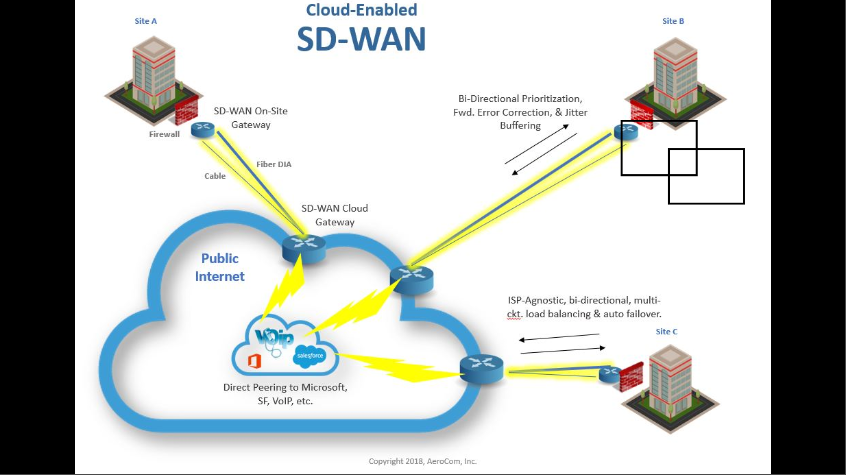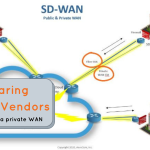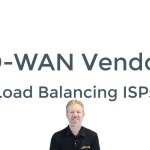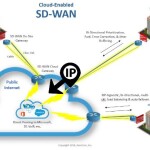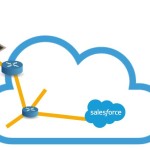If you’re researching SD-WAN for your company, you’ve probably noticed that there is a delineation, between on-prem-only solutions, and cloud-enabled solutions.
If your company’s critical applications are moving to the cloud, you should absolutely take inventory of how your WAN needs have changed over the last 10 years.
In this short video, Mike Smith explains six benefits of cloud-enabled SD-WAN solutions.
Want Mike’s recommendation on the SD-WAN vendors your company should be quoting? Click below and ask him.
About Mike
Mike Smith is the Founder and President of AeroCom and has been helping companies with telecom and cloud services since 1999. He has been the recipient of numerous business telecommunications industry awards and in 2011, he was honored as one of the top 40 business people in Orange County, CA., under 40 years old. You can also hear him as the host of the popular Information Technology podcast, ITsmiths with Mike Smith. Follow Mike on LinkedIn, Twitter or SpiceWorks.
Transcript
So your company is looking into SD-WAN. Maybe you have an MPLS network, maybe not. For whatever reason you’re looking into SD-WAN. One of the things I want to talk to you about is really take into consideration how your business has changed. Your company has really changed in the last 10 years. 10 years ago, all your critical applications were probably hosted onsite. They’re probably sitting in a data center.
Today, I bet most, if not, all of your critical applications are either in the cloud or very soon going to the cloud. So when it comes to a WAN technology, we really shifted in terms of trying to improve site-to-site communication to now we’re trying to improve site-to-cloud communication.
So when you’re looking at an SD-WAN service provider, that’s what you really need to think about. How can we improve site-to-cloud communication, not necessarily site-to-site communication? And the way you do that is you look for SD-WAN vendors that are cloud-enabled. What that means is that they’ll deploy an appliance at every one of your sites and those appliances connect up to a cloud gateway. And by having a gateway in the cloud, it opens up a lot of other features and functionality that will enhance your site-to-cloud experience with all of your applications that you’re using.
Let me give you some examples. Okay. There’s six ways that a cloud-enabled SD-WAN vendor can help your site-to-cloud communication.
First, they can prioritize applications on not only outbound internet traffic, but also inbound internet traffic. So that really differentiates from the onsite only SD-WAN solutions, where they just have an appliance on site. Those solutions can only affect outbound internet traffic, but by having that gateway in the cloud, now the SD-WAN service provider can do prioritization on not just outbound, but inbound as well.
The next thing they can do in addition to prioritization, they can also do packet duplication with inbound traffic, as well as the outbound. So same concept because of that cloud gateway. If packet duplication is something that will help your site-to-cloud application, that’s really something you want to look into. Because having it bi-directional is really important.
Another thing that a cloud-enabled SD-WAN vendor can do is do jitter buffering for not just outbound, but inbound internet traffic. If you don’t know what jitter buffering is, look it up, but it’s great for hosted VoIP traffic. And we all know hosted VoIP traffic is not just outbound. It’s both outbound and inbound traffic. So it doesn’t make sense to use an SD-WAN solution to improve hosted VoIP traffic if it can only affect outbound traffic, that’s only half of the call. The other half is coming inbound. So if you want jitter buffering for outbound and inbound, you need to look at a cloud-enabled SD-WAN solution.
The fourth way a cloud-enabled SD-WAN vendor can help you is they can give you direct peering with the major cloud apps. So it’s basically a fast lane to the major cloud applications like AWS. So that cloud gateway at the cloud gateway, they directly peer up with these major cloud applications. So once your traffic hits that cloud gateway, you’ve got a fast lane to things like Microsoft to AWS, things like that. So you’re going to have a better application experience than if you’re just going over the public internet and hanging a lot more hops in-between your site and that called application.
The fifth way a cloud-enabled vendor is going to help you with SD-WAN is doing bi-directional load balancing. So just like we talked about bi-directional stuff with prioritization and jitter buffering, all that stuff. It works the same with load balancing over multiple ISP circuits. So say one of your sites has several different ISP circuits plugged into the SD-WAN. They’ve got a primary fiber, a secondary broadband connection, maybe a tertiary standby for a 4G. So not only can the SD-WAN automatically load balanced between all those three connections for outbound internet traffic, they can also load balance all three of those connections on the inbound internet traffic as well. So again, why only a load balance for outbound when you load balance for outbound and inbound?
And the very last thing I want to talk to you about is the ability for a cloud-enabled SD-WAN solution to automatically failover an internet session from one circuit to the next without interrupting that session. So for instance, on a hosted VoIP phone call, say that hosted VoIP call session is running across your primary fiber internet connection. And that fiber internet connection starts to experience a high level of packet loss all of a sudden or starts getting a lot of errors on that circuit.
The SD-WAN solution, because the call is actually controlled by the cloud gateway and not the onsite gateway, that SD-WAN solution detects all the errors on that circuit and will automatically flip the call to your secondary internet connection within milliseconds and the call never drops. So that’s something that you could only do with a cloud-enabled SD-WAN solution.
So those are six different ways that a cloud-enabled SD-WAN solution is going to improve your site-to-cloud connectivity, rather than just site-to-site connectivity. So I hope that helps a little bit. There’s a lot of other information though, within all those six different things. So don’t feel like you have to learn all this stuff. Don’t research all day long on Google, just call me. Shoot me an email, give me a call if you’d like some recommendations. Tell me about your company and I can tell you which SD-WAN vendors specifically I’d recommend for your company and help you get introduced to the right people at those companies and get some great quotes so that you don’t have to sit around and guess.
And the best thing is our company will not charge you a dime for our recommendations. So there’s absolutely no reason not to give us a call. Reach out via email or call me at 714-593-0011. I’m happy to help. I’m happy to talk to you about your company, what your requirements are and introduce you to the right people right away. Have a great day.

